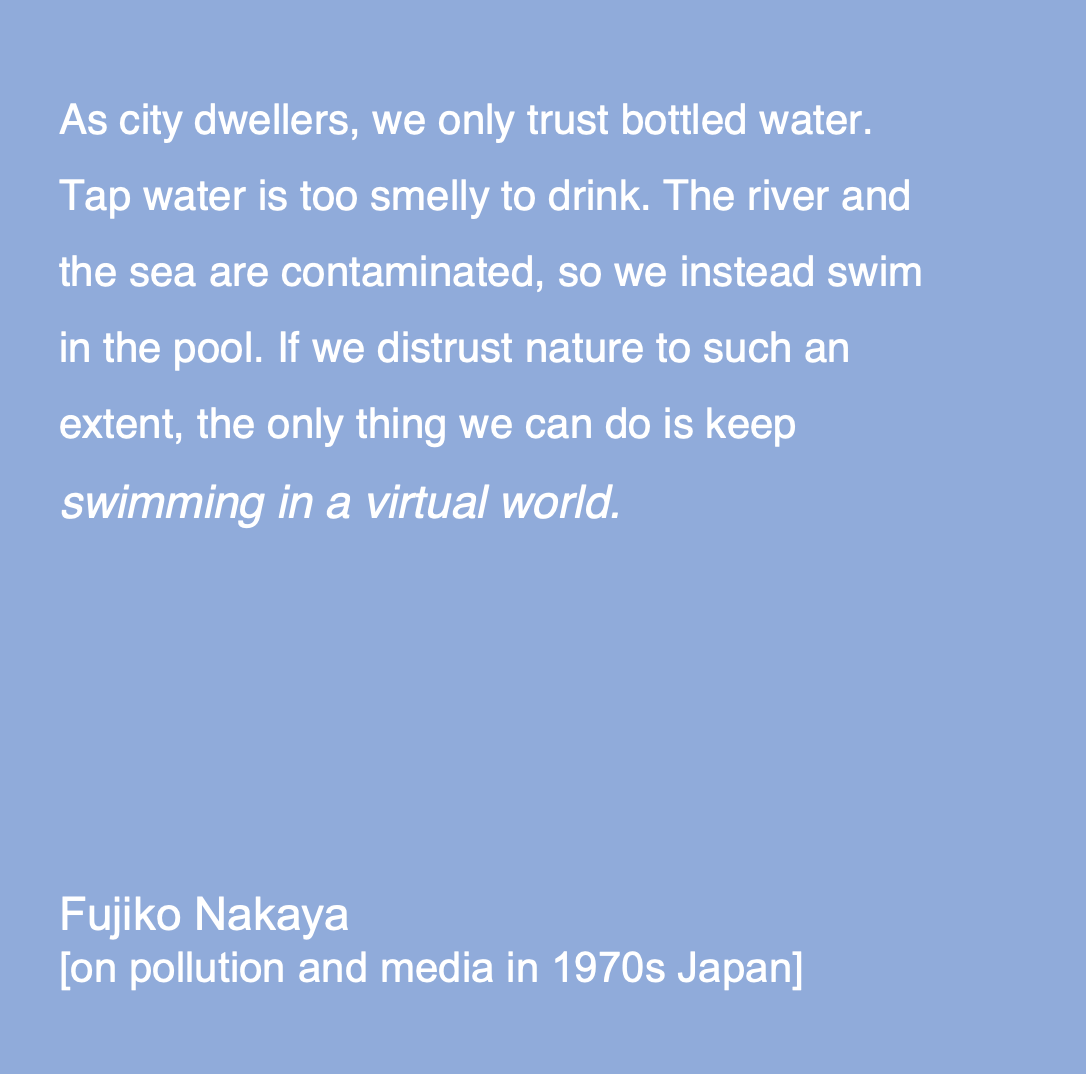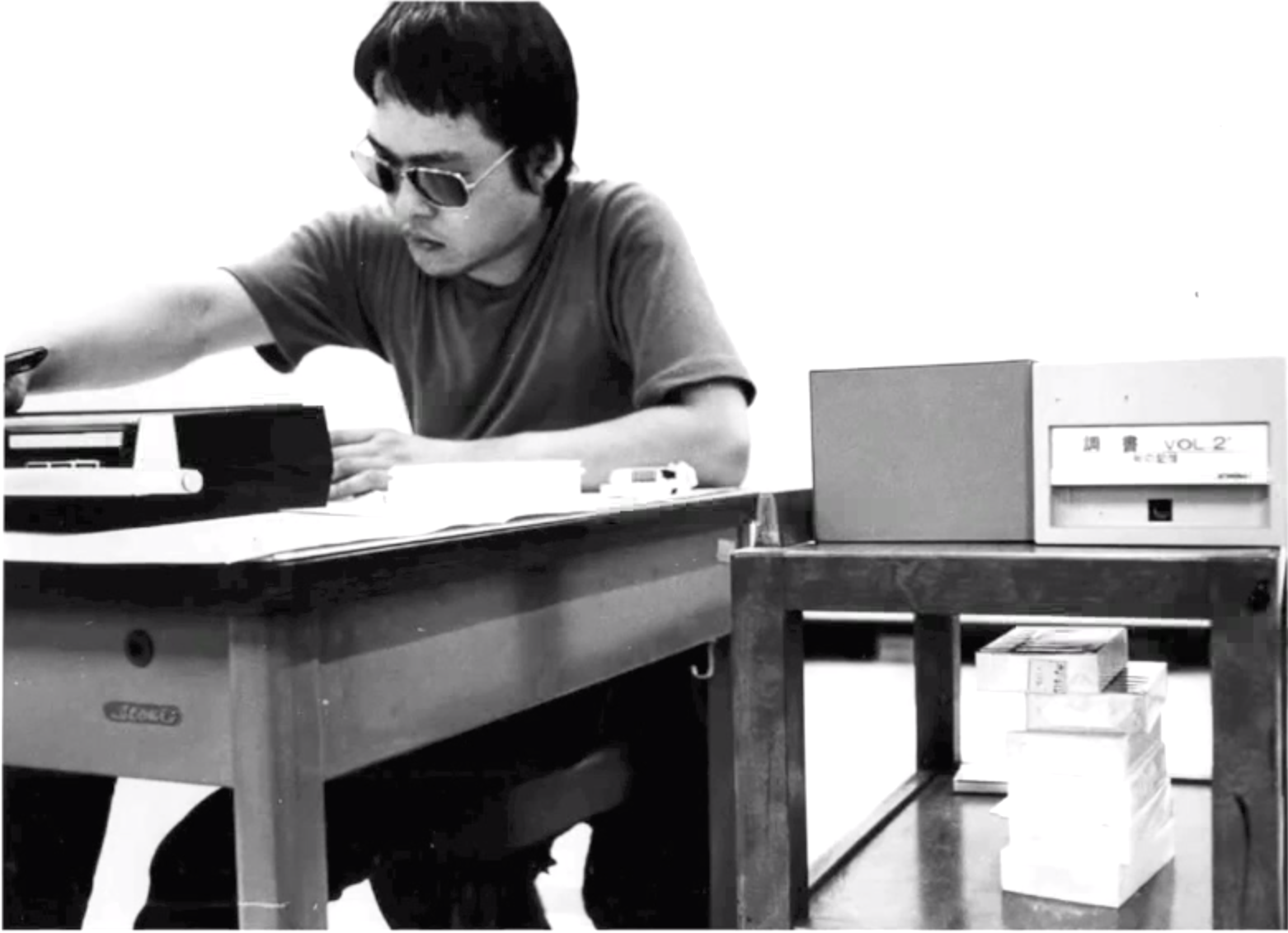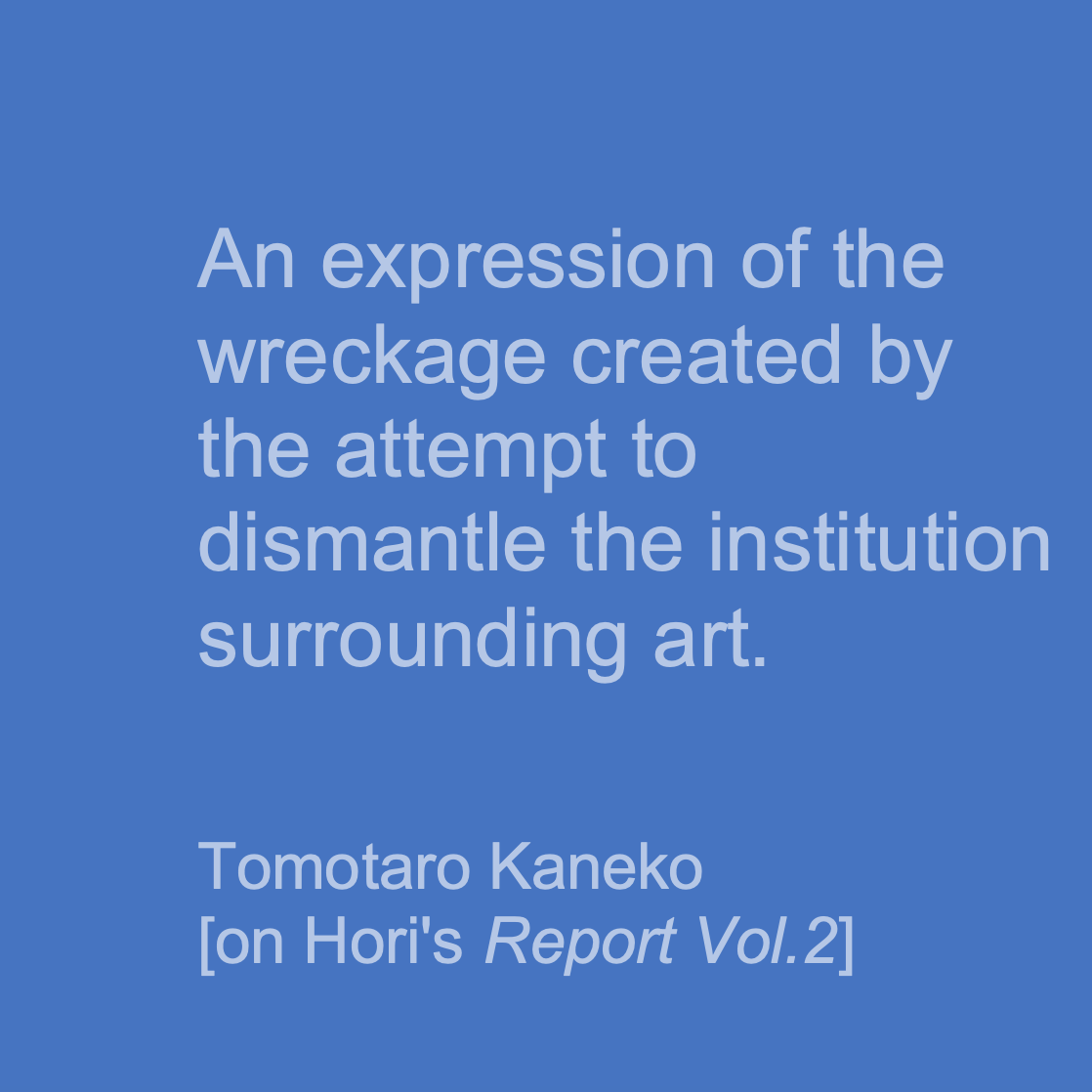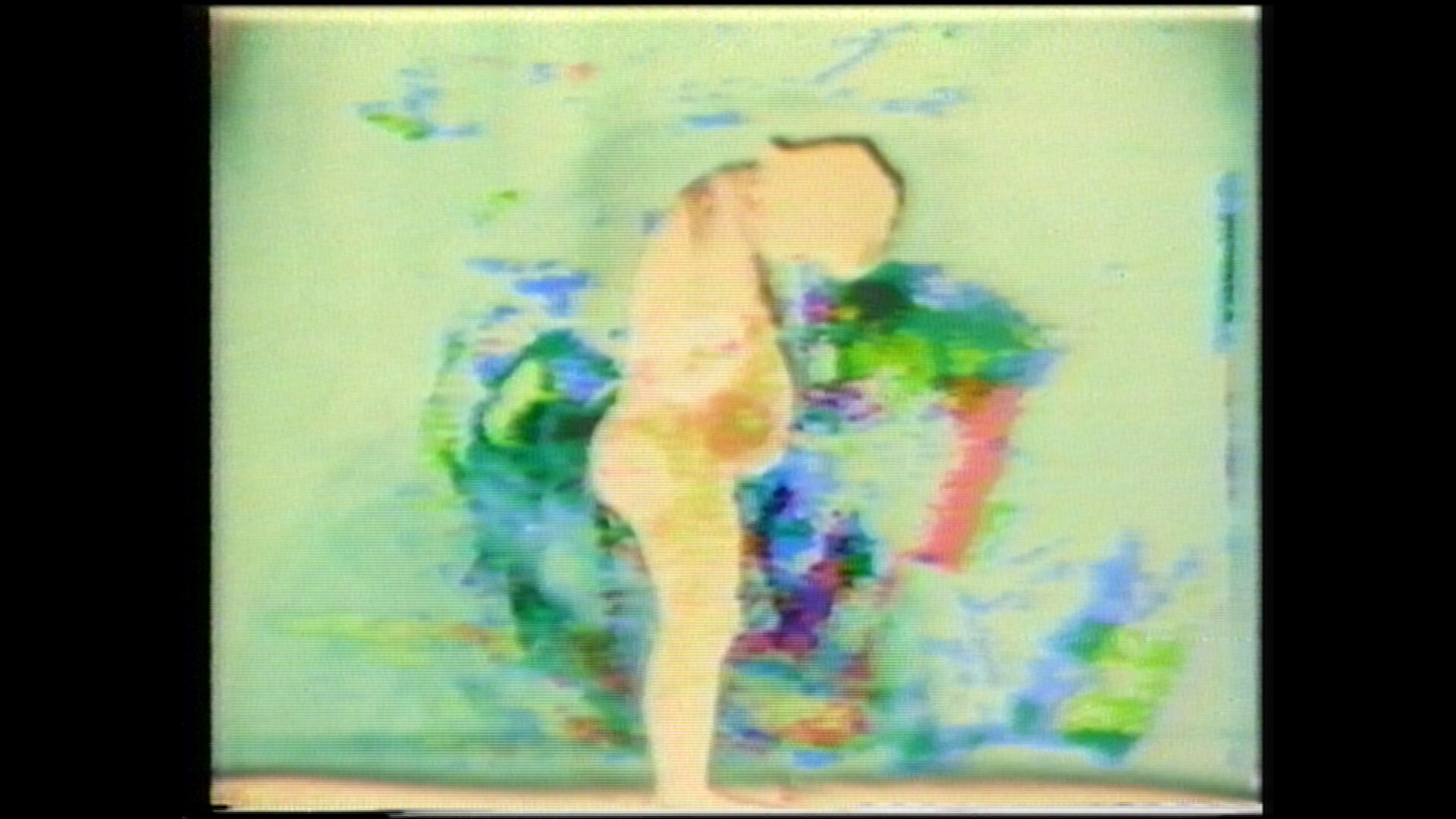Interrogating Ecology
In 2021 CCJ was awarded a grant by the Japan Virtual Exchange Program grant of the Asian Cultural Council to support a research project that will encourage exchanges between artists, researchers, archivists, and the public across Japan and the U.S. through online conversations, research, and presentations about media and art of the 1970s Japan.
Interrogating ecology: 1970s Media and Art in Japan
National Border Tokara Archipelago : Deserting Islands” by Takuma Nakahira from the March 1977 issue of Asahi Camera © Gen Nakahira
In 2021 CCJ was awarded a grant by the Japan Virtual Exchange Program grant of the Asian Cultural Council to support a research project that will encourage exchanges between artists, researchers, archivists, and the public across Japan and the U.S. through online conversations, research, and presentations about media and art of the 1970s Japan.
Led by researcher Nina Horisaki-Christens, Collaborative Cataloging Japan is assisting to organize a series of online discussions around a core panel titled, Interrogating Ecology: 1970s Media and Art in Japan. The core panel participants are Dr. Haeyun Park, Seoul National University; Dr. Tomotaro Kaneko, Aichi University of the Arts; Nina Horisaki-Christens, Columbia University; Dr. Franz Prichard, Princeton University; and Dr. Julian Ross, Leiden University.
Planned as a series of discussions, the core panel will be followed by events with additional participants from a wide range of practice including scholars, curators, artist, and archivists. In addition, this project will enable new digitizations of research material designed to assist the ongoing investigations by the core participants. These materials will be presented either as a screening, or included in the participants’ presentations at the later panel event, with an aim to explore digital presentation methods that are unique and compelling for an online, multimedia scholarly presentation.
1970 in Japan marked a shift from rapid economic growth, industrialization, and urbanization to a reckoning with the new order of the information economy, the managed society, and environmental pollution. If 1970 opened to cheerful preparations for Osaka’s Expo ‘70—indicating Japan’s emergence as an economically, technologically, and culturally advanced world power—by December of 1970 a series of high profile environmental pollution incidents necessitated a special Diet session to enact fourteen major anti-pollution bills.
Within Japan’s art scene, the artist-designed pavilions of Expo ‘70 represented the culmination of artistic experimentation in technology, projection, and eizō (the mechanically-produced image) that had taken place in association with terms such as kankyō geijutsu (environmental art) and intāmedia (intermedia). The discourses around kankyō and eizō of the late 1960s were a challenge to institutional art, taking art out of museums and into discos and stadiums while helping audiences cope with the image saturation of high capitalism and the information economy. Yet Expo ‘70 saw the larger systems of social conditioning and the commodifying logic of capitalist accumulation subvert the critical aims of many participating artists. In its aftermath, artists approached the urban media environment anew, employing reproductive media through a more ecological lens to recognize and interrogate their own place within the systems of media, capitalist consumption, and managed social reproduction. This panel presents investigations of 1970s works by four Japanese artists—Kōsai Hori, Takuma Nakahira, Fujiko Nakaya, and Nobuo Yamanaka—that use photography, film, video, and sound recording media to investigate the conditions of 1970s Japan through this new ecological lens.
The Asian Cultural Council advances international dialogue, understanding, and respect through cultural exchange activities that support individual artists, scholars, and arts professionals in Asia and the United States.
CORE PARTICIPANTs’ BIOS
Haeyun Park
Dr. Park’s dissertation examined the trans-Pacific development of video art through a network of artistic exchange and collaboration among Korean, Japanese, and Asian-American artists in the 1970s and 1980s. She is the recipient of the Asian Cultural Council Dissertation Grant, the Early Research Initiative Pre-Dissertation Fellowship, and the Graduate Center Five-Year Fellowship. Her essays have been published in the special issue of the Journal of Chinese Contemporary Art, the New Museum as Hub Paper, and the exhibition catalogue of Kim Dong-Gi. Haeyun has taught at Brooklyn College, and has worked at the Museum of Modern Art, International Center of Photography, and the New Museum of Contemporary Art
Tomotaro Kaneko
Dr. Kaneko’s field is Aesthetics and aural culture. He has organized Japanese Art Sound Archive since 2017. His recent publications include “Sound Technology in Japanese Art after the movement of “Environmental Art”: Bikyoto Generation in the Early 1970s” (in Hyosho: Journal of the Association for Studies of Culture and Representation, no. 12, 2018), “Namaroku culture in 1970s Japan: The techniques and joy of sound recording” (in Kallista: the Journal of Aesthetics and Art Theory, no. 23, 2017), and a Japanese translation of Jonathan Sterne’s book, The Audible Past: Cultural Origins of Sound Reproduction (jointly translated by Katsushi Nakagawa, Tomotaro Kaneko, Fumikazu Taniguchi, published by Inscript, 2015). He has also worked on a series of reviews of foreign books on the topics of sound studies and sound art in the music magazine, Artes (2011–2015).
Nina Horisaki-Christen
Dr. Horisaki-Christen is a sculptor, an art historian and freelance curator with PhD in Art History concentration in Japanese Modern Art History at Columbia University. She received a Fulbright Scholarship, completed the Whitney Independent Study Program, and has taught at both Columbia and Fordham University.
Franz Prichard
Dr. Prichard is a researcher, and Assistant Professor of East Asian Studies at Princeton. His first book, Residual Futures: The Urban Ecologies of Literary and Visual Media of 1960s and 1970s Japan, was published by Columbia University Press, 2019, examines the rapid transformation of the urban and media ecologies of Japanese literary and visual media of the 1960s and 70s. His research and teaching explores the literature, visual media, and critical thought of contemporary Japan. He is interested in the provocative forms of exchange among works of criticism, fiction, film and photography that offer vivid perspectives on urban materiality and ecological transformation. Prior to arriving at Princeton, he was a postdoctoral fellow at the Reischauer Institute of Japanese Studies at Harvard University, and taught at the University of North Carolina at Charlotte.
Julian Ross
Dr. Ross is a Lecturer at Leiden University in LUCAS, the Centre for the Arts in Society. His recent publications include book chapters and articles in The Japanese Cinema Book (BFI, 2020), America: Films from Elsewhere (The Shoestring Publisher, 2019) and Japanese Expanded Cinema Revisited (Tokyo Photographic Art Museum, 2017). As a curator, he has presented curatorial projects related to Japanese expanded cinema at Tate Modern, BOZAR Centre for Fine Arts and Art Institute of Chicago. He was a curatorial advisor for the exhibition Japanese Expanded Cinema Revisited at Tokyo Photographic Art Museum and is a Core Research Group member of Collaborative Cataloging Japan. He is a Programmer at International Film Festival Rotterdam.
EVENTS
Thursday, December 9, 2021
Interrogating Ecology: Workshop
Organized in conjunction with the Interrogating Ecology: 1970s Media and Art in Japan Academic Panel (December 10th), this closed-door workshop includes presentations and a group discussion addressing the relationship between the exercise of re-staging time-based media works, and the field of research and curation.
Friday, December 10, 2021
Interrogating Ecology: 1970s Media and Art in Japan Winter Panel Event
Please join us in the Winter Panel event for Interrogating Ecology project, with core group scholars Haeyun Park, Seoul National University; Tomotaro Kaneko, Aichi University of the Arts; Nina Horisaki-Christens, Columbia University; Franz Prichard, Princeton University; Julian Ross, Leiden University Centre for the Arts in Society (LUCAS); and contextual scholars Yuriko Furuhata, McGill University; Takashi Kadobayashi, Kansai University; and Takuya Tsunoda, Columbia University.
The presentations by the panelists will be available online (link to the videos to be announced here) from December 2-12, and a collective panel discussion and Q&A will be held on December 10. Please register at the above link to join the panel discussion event.
December 3-12, 2021
Norio Imai Online Screening Program Organized by Haeyun Park
Details forthcoming.
Friday, May 14, 2021
Interrogating Ecology: 1970s Media and Art in Japan Panel Event
The first public panel event in the year-long Interrogating Ecology project was held on on May 14th, 2021 EST and hosted by the Mary Griggs Burke Center for Japanese Art at Columbia University. Panelists included Dr. Park, Dr. Kaneko, Dr. Horisaki-Christens, Dr. Prichard, and joined by panel discussant, Dr. Michio Hayashi of Sophie University.
This event is followed by a research development period over the summer and fall, and will conclude with a second panel, workshop, and screening events this winter. In addition, the research will be accompanied by new digitizations of moving image works and research materials related to the project. More details will be announced as they are confirmed.
SNAPSHOTS
FUJIKO NAKAYA’s Ecological Video: Resisting the Japanese Information-Polluted Archipelago
Nina Horisaki-Christens, Columbia University
Writing in 1974 about why she felt it important to publish a Japanese translation of Michael Shamberg’s infamous DIY video handbook Guerilla Television, Fujiko Nakaya draws a parallel between Japan and “Media America,” referring to the island nation as an “information-polluted archipelago” (jōhō kōgai resshima). In this single term Nakaya encapsulates her vision of the inextricable nature of media and natural ecologies, tying the pollution problems of rapid postwar industrialization and urbanization to the highly managed structures of the media systems that flourished in 1960s Japan. While Nakaya has been well recognized internationally for her water-based environmentally responsive fog sculptures, the key role that she played in the development of early video practices and media critique in Japan has gone under-recognized. By revisiting the first decade of Nakaya’s video practice through the context of 1970s Tokyo and contemporaneous developments in her fog sculpture series, this paper will delineate Nakaya’s integrated understanding of the concept of ecology. It will demonstrate how her video works, while drawing inspiration from models of natural science and incorporating increasingly explicit natural imagery, were unequivocally intended as a form of resistance to the increasing systems of economic control and social management found in the jōhō shakai (information society) and the kanri shakai (highly managed society) of 1970s Japan.
Dismantling Environment: KōSAI HORI’s Report Series
Tomotaro Kaneko, Aichi University of the Arts
This presentation considers Kōsai Hori’s 1973 performative sound work series Report as a critique of the Japanese avant-garde and Environmental Art (kankyō geijutsu) movements of the late 1960s. At the height of Japan’s postwar rapid economic growth period, Japanese avant-garde artists used combinations of performance, technology, and immersive environments to expand art beyond traditional exhibition venues and into urban daily life. The trajectory of Inter-media and Environmental Art practices from the 1966 exhibition From Space to Environment to Osaka’s Expo 70 saw artists drawing on emerging technological media and interactivity to challenge genre boundaries and address the intensification of image culture within the urban environment. However, the spectacular, immersive pavilions of Expo 70 revealed how these strategies could be co-opted by the corporate and national entities to serve the ends of social management in the emerging consumer lifestyles of the new information economies.
Critical of what he saw as a capitulation of avant-garde artists to state and corporate power, Hori served as chair of Bikyōtō (the Artists Joint-Struggle Committee) during the student movements of the late 1960s, and actively protested Expo 70. His subsequent turn to technologies including the tape recorder, typewriter, and video in works including Report thus begs investigation. Drawing on Hori’s writings of the early 1970s and performing a close listening to the original sound recordings of Report, this presentation will demonstrate how Hori reoriented the discourse around environment (kankyō) to criticize the merging of art into life, instead proposing the dismantling of both.
beyond the screen: NOBUO YAMANAKA’s experimentations with moving image
Haeyun Park
On a summer evening of June 1971, artist Nobuo Yamanaka projected a 16mm moving image of the Tama River in Tokyo onto the murky surface of that same industrially polluted river. This riverbank event, entitled Projecting the Film of River on the River, was followed a year later by a new projection of the same film. This time the moving images were cast through the glass door of Tamura Gallery, allowed to spill out onto the streets of Tokyo’s Nihonbashi district. Yamanaka’s work illustrates a growing tendency among Japanese artists in the early 1970s to take up film as the material for their work and to exhibit them in galleries and in the outdoors, which led to the creation of a new category of “moving image as fine art,” distinct from the tradition of “film as cinema.” This approach was partially born out of a critical reassessment of the multi-channel moving images that had been turned into a crowd-amassing spectacle during Osaka’s Expo 70. This paper demonstrates how the shift in the site of screening for film—from the confined spaces of the theater out into the natural and urban environment—fundamentally altered modes of spectatorship and the possibilities of the moving image.













